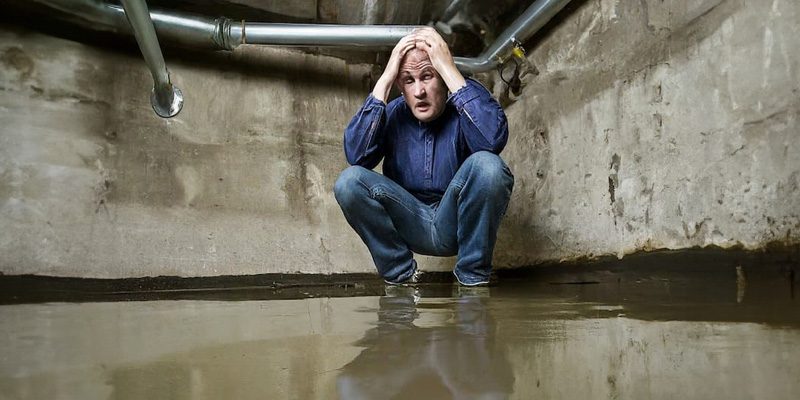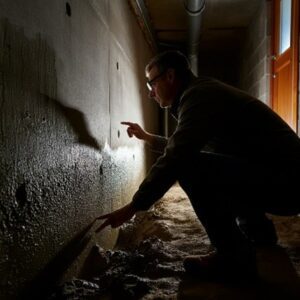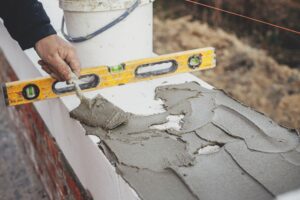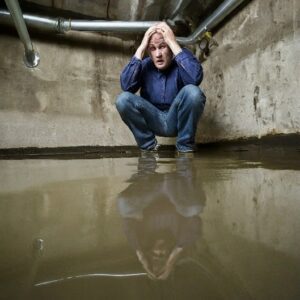We get a lot of people searching our website looking for weeping tile information. A fully functional weeping tile system is a crucial component of every home’s water drainage system. If any part of it fails, substantial damage can occur. Sometimes a remarkably simple and often overlooked mechanism found in most homes can be the cause of your problem.
Quite often homeowners overlook the crucial components of their home’s drainage system until a problem arises. One such component is the weeping tile backflow valve (sometimes called a flapper), a small but vital part of your home’s waterproofing and drainage infrastructure.
Understanding what a weeping tile backflow valve is and why it needs regular maintenance can save you from considerable damage and costly repairs.
What is a Weeping Tile Backflow Valve?
Weeping tile, also known as a drain tile, perimeter drain, or French drain, is a porous pipe used for underground drainage. Installed around the foundation of a home, its primary function is to channel water away from the foundation, preventing water accumulation and potential basement flooding.
The backflow valve is a mechanism installed within the weeping tile system. This valve allows water to flow out of the drainage system while preventing backflow. It acts as a one-way gate: water can exit the system, but external water or debris cannot enter and clog the pipes.
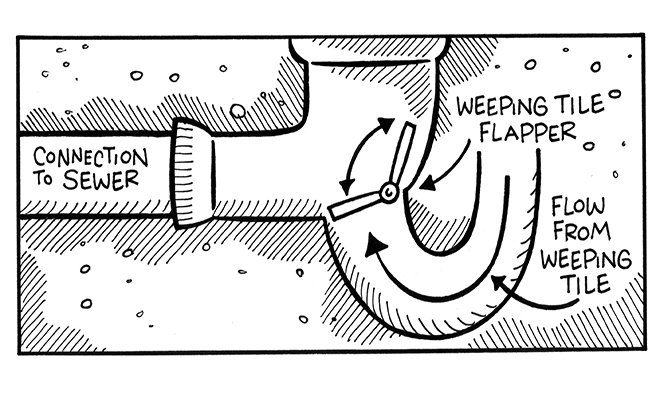
The Importance of the Weeping Tile Backflow Valve:
Preventing Flooding and Water Damage
The primary role of the backflow valve is to prevent water from backing up into the foundation drainage system. Without a functioning valve, during heavy rains or flooding, water can flow back into the system, leading to water pooling around the foundation. Over time, this can cause significant water damage to the foundation and basement.
Maintaining Structural Integrity
Excess water around a home’s foundation can lead to soil erosion and settlement issues. As the soil around the foundation shifts or erodes, the structural integrity of the house can be compromised. A functioning backflow valve helps maintain a dry environment around the foundation, preserving the stability of the structure.
Preventing Mold and Mildew
A damp basement or foundation is a breeding ground for mold and mildew, which can cause health problems for residents and deteriorate building materials. By ensuring that water is effectively drained away from the home, the backflow valve plays a crucial role in keeping the basement dry and mold-free.
Why Regular Maintenance is Crucial
Regular maintenance of the backflow valve is essential to ensure it functions properly and effectively protects your home. Here are some reasons why maintaining this small component is so important:
Avoiding Clogs and Blockages
Over time, debris, soil, and other particles can accumulate in the drainage system, potentially blocking the backflow valve. Regular inspections and cleaning can prevent these blockages, ensuring the system continues to function smoothly.
Extending the Lifespan of the Drainage System
A well-maintained backflow valve contributes to the overall longevity of the drainage system. By preventing backflow and clogs, it reduces the wear and tear on the pipes and other components, ultimately extending the system’s lifespan.
Cost Savings
Preventive maintenance is always more cost-effective than emergency repairs. Regularly checking and maintaining the backflow valve can help you avoid costly repairs related to water damage, foundation issues, and mold remediation.
How to Maintain Your Weeping Backflow Valve
Maintaining your weeping tile backflow valve involves regular inspections and cleanings. Here are a few steps you can take:
Visual Inspections
Periodically check the valve for signs of damage or wear. Ensure that it opens and closes smoothly without obstruction.
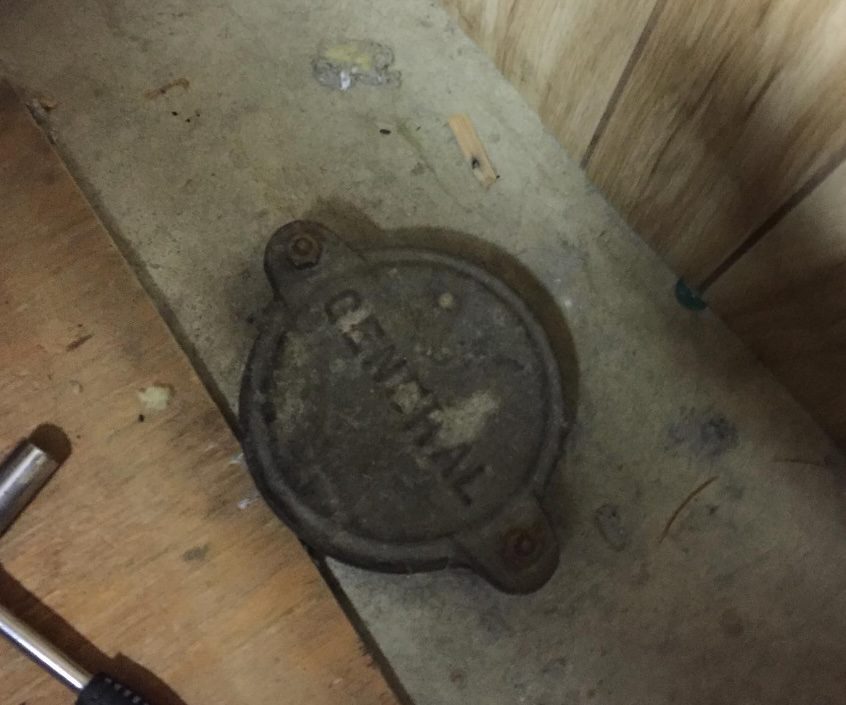
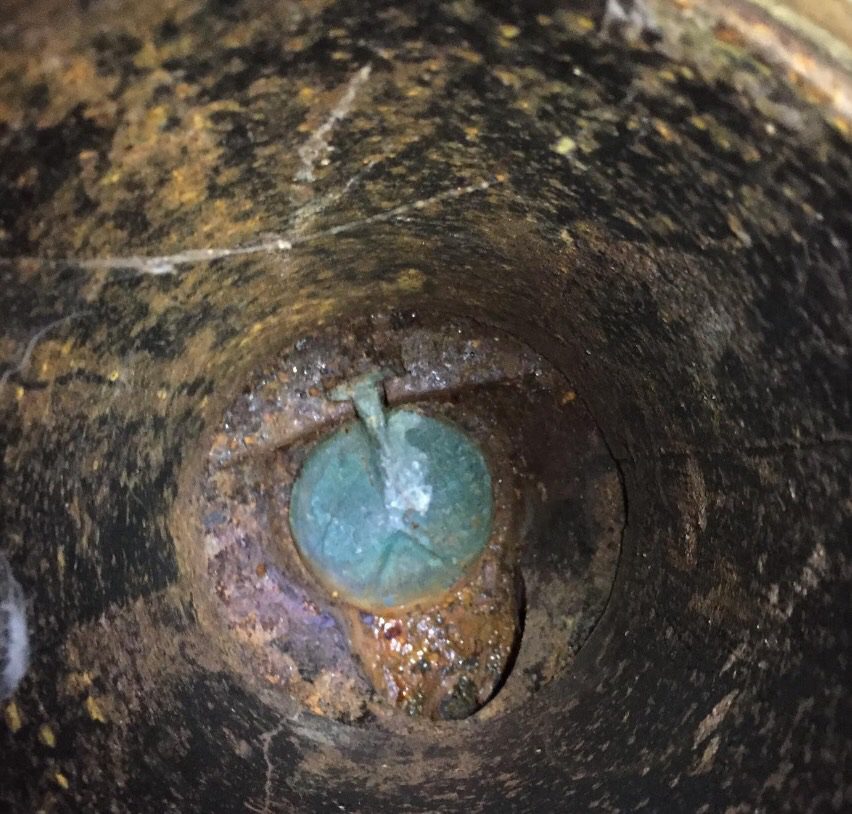
Cleaning
Remove any debris or sediment that may have accumulated. This can typically be done with a garden hose or a specialized plumbing snake.
Professional Inspections
Consider having a professional like Shield Foundation Repair inspect your drainage system annually. They can provide a thorough cleaning and identify any potential issues before they become major problems.
Conclusion
The weeping tile backflow valve may be a small component of your home’s drainage system, but its role is indispensable in preventing water damage, maintaining structural integrity, and ensuring a healthy living environment. Regular maintenance is a small investment that can yield significant long-term benefits, saving you from costly repairs and ensuring the safety and stability of your home.
If you suspect your weeping tile system is malfunctioning, give us a call today at 780 760 4900 to speak to one of our friendly staff, or using our handy contact form.
